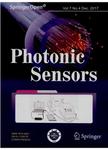Design and Optimization of the CFRP Mirror Components
Design and Optimization of the CFRP Mirror Components作者机构:University of Chinese Academy of Sciences Beijing 100039 China Changchun Institute of Optics Fine Mechanics and Physics Chinese Academy of Sciences Changchun 130033 China Chang Guang Satellite Technology LTD. Co Changchun 130000 China
出 版 物:《Photonic Sensors》 (光子传感器(英文版))
年 卷 期:2017年第7卷第3期
页 面:270-277页
核心收录:
学科分类:0808[工学-电气工程] 0809[工学-电子科学与技术(可授工学、理学学位)] 08[工学] 0805[工学-材料科学与工程(可授工学、理学学位)] 080502[工学-材料学] 0803[工学-光学工程] 0702[理学-物理学]
主 题:Pure-CFRP mirror lay-up design bipod integrated optimization
摘 要:As carbon fiber reinforced polymer (CFRP) material has been developed and demonstrated as an effective material in lightweight telescope reflector manufacturing recently, the authors of this article have extended to apply this material on the lightweight space camera mirror design and fabrication. By CFRP composite laminate design and optimization using finite element method (FEM) analysis, a spherical mirror with φ316 mm diameter whose core cell reinforcement is an isogrid configuration is fabricated. Compared with traditional ways of applying ultra-low-expansion glass (ULE) on the CFRP mirror surface, the method of nickel electroplating on the surface effectively reduces the processing cost and difficulty of the CFRP mirror. Through the FEM analysis, the first order resonance frequency of the CFRP mirror components reaches up to 652.3Hz. Under gravity affection coupling with +5℃ temperature rising, the mirror surface shape root-mean-square values (RMS) at the optical axis horizontal state is 5.74 nm, which meets mechanical and optical requirements of the mirror components on space camera.



